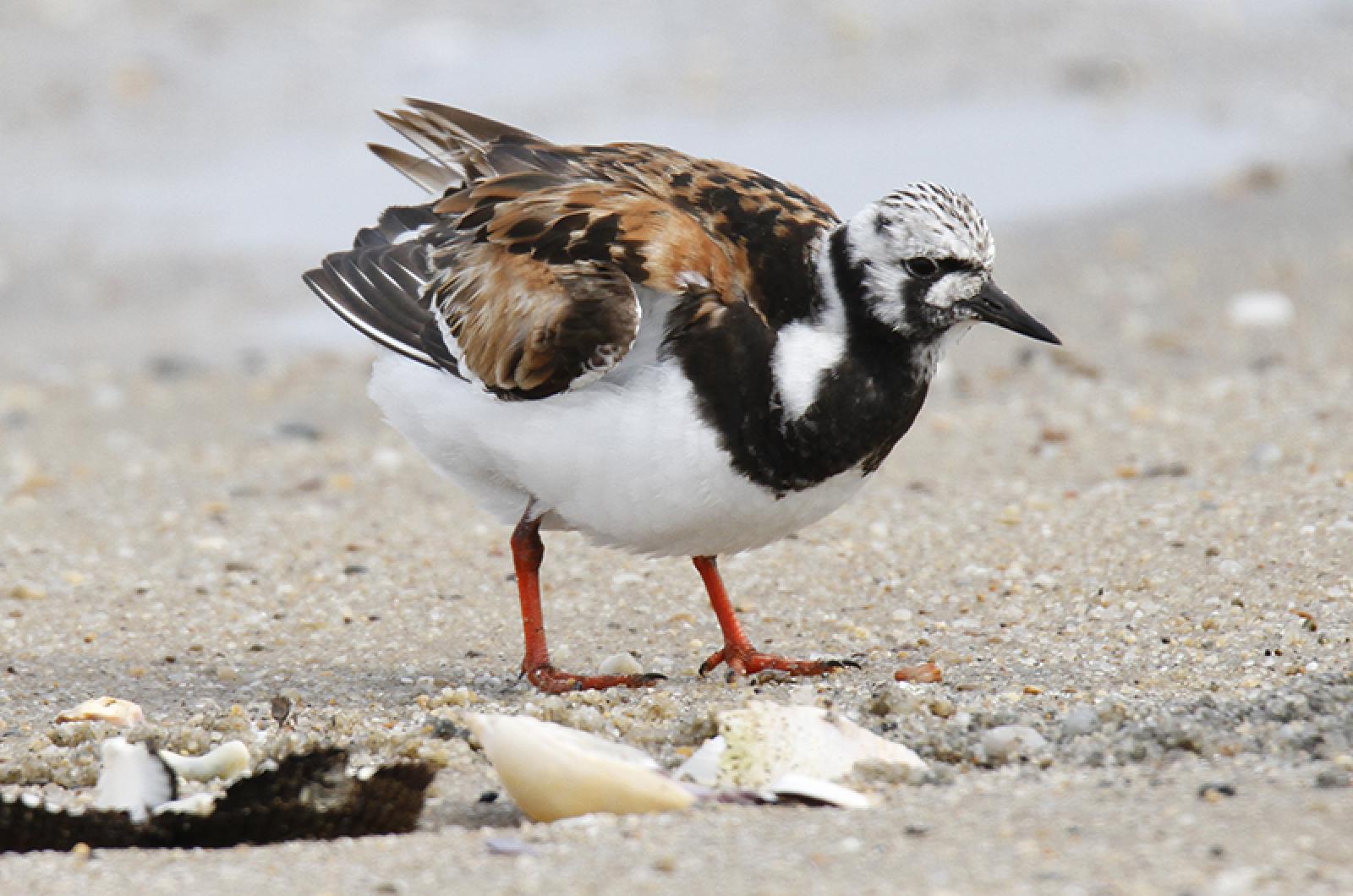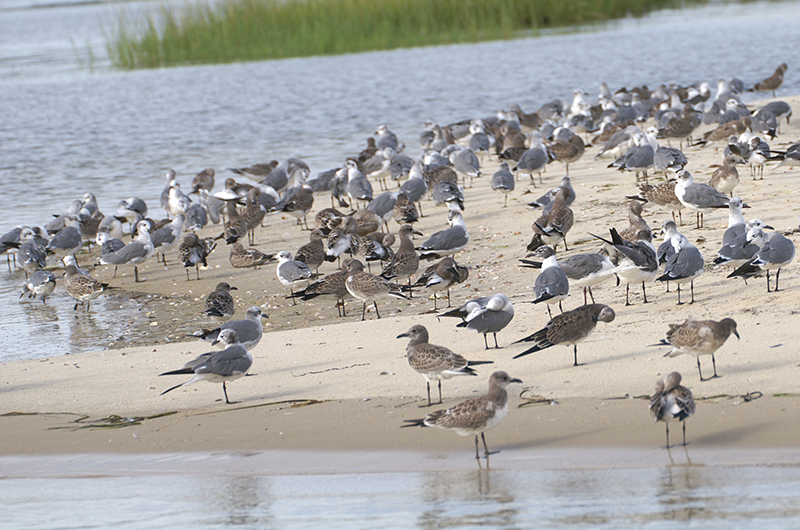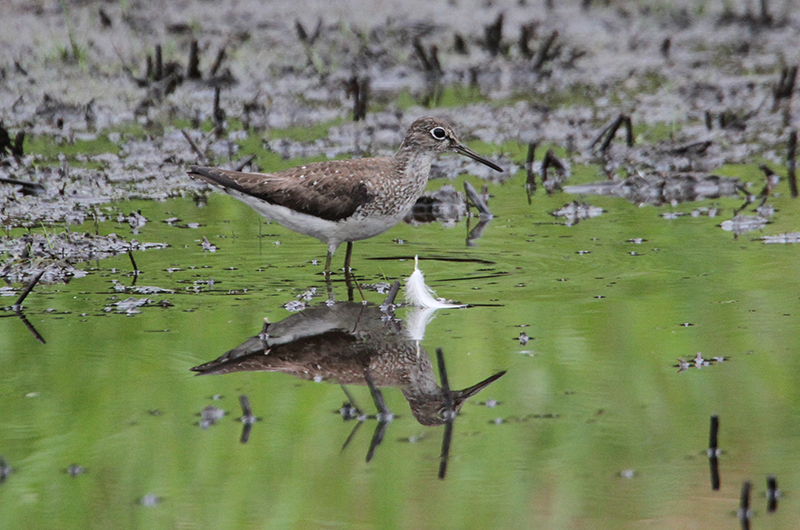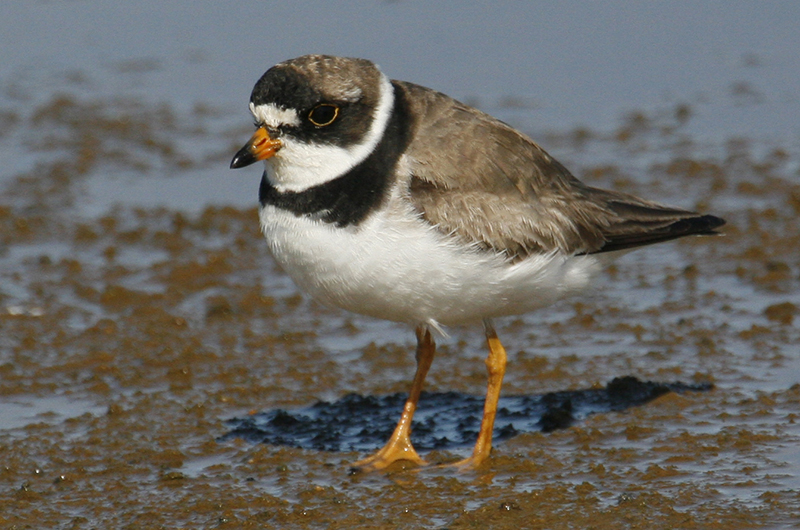We found 114 species on the annual Felix Neck Bird-a-thon, which was held over a 24-hour period beginning at 6 p.m. on May 11 and continuing through 6 p.m. on May 12. It was a lot of fun, but a number of us agreed that the birding was sparse at best.
Far and away the most noteworthy feature of the day of birding is the lack of transient songbirds. This was totally unexpected as this is more or less the peak of their migration. The weather was not particularly favorable for migrants, although it was not particularly bad either. But look at a map of eastern Massachusetts and note how far we jut out into the ocean. Most migrants will take a more direct route north, flying from Providence to Boston, or even flying northward up the Connecticut or Hudson River, rather than detouring to the east to visit us.
Only 10 of the 113 species were transient species that neither breed nor overwinter here: American kestrel, semipalmated plover, spotted sandpiper, solitary sandpiper, greater yellowlegs, ruddy turnstone, semipalmated sandpiper, least sandpiper, short-billed dowitcher, and laughing gull.
Allan Keith and Susan Whiting teamed up and their best birds were a short-billed dowitcher, two lingering lesser scaup, and two lingering bufflehead, all found on Chilmark Pond.
Bill Bridwell and I caught up with Suzan Bellincampi and Al Sgroi in the afternoon and we birded the ocean from Squibnocket Beach, the only location where we found multiple species of interest. We all got good looks at three horned grebes and three red-necked grebes in close to shore, amongst a flock of all three scoter species. We met up again a short while later at Lobsterville and, while we were talking, Suzan Bellincampi spotted an eastern kingbird, our only one of the day. I also spotted a lone laughing gull earlier in the day as it perched on the old jetties at Harthaven.
Olsen and Amy Houghton’s highlights included black skimmer, red-throated loon, ruddy turnstone, short-billed dowitcher and brown thrasher.
John Nelson spotted an American kestrel and a ruddy turnstone in the fields at the Farm Institute.
Slim pickings! Here is the list of species we found.
Brant, Canada goose, mute swan, wood duck, American black duck, mallard, lesser scaup, common eider, surf scoter, white-winged scoter, black scoter, bufflehead, red-breasted merganser, wild turkey, red-throated loon, common loon, horned grebe, red-necked grebe, northern gannet, double-crested cormorant, great cormorant, great blue heron, great egret, snowy egret, green heron, black-crowned night-heron.
Turkey vulture, osprey, northern harrier, Cooper’s hawk, red-tailed hawk, American kestrel, black-bellied plover, semipalmated plover, piping plover, killdeer, American oystercatcher, spotted sandpiper, solitary sandpiper, greater yellowlegs, eastern willet, ruddy turnstone, sanderling, semipalmated sandpiper, least sandpiper, short-billed dowitcher.
American woodcock, laughing gull, ring-billed gull, herring gull, great black-backed gull, least tern, common tern, black skimmer, rock pigeon, mourning dove, barn owl, eastern screech owl, barred owl, eastern whip-poor-will, chimney swift, ruby-throated hummingbird, belted kingfisher, red-bellied woodpecker, downy woodpecker, hairy woodpecker, northern flicker, eastern phoebe.
Great crested flycatcher, eastern kingbird, red-eyed vireo, blue jay, American crow, tree swallow, northern rough-winged swallow, bank swallow, barn swallow, black-capped chickadee, tufted titmouse, white-breasted nuthatch, Carolina wren, house wren, eastern bluebird, wood thrush, American robin, gray catbird, northern mockingbird, brown thrasher, European starling, ovenbird, blue-winged warbler, common yellowthroat.
American redstart, northern parula, yellow warbler, pine warbler, yellow-rumped warbler, prairie warbler, eastern towhee, chipping sparrow, field sparrow, song sparrow, white-throated sparrow, dark eyed junco, scarlet tanager, northern cardinal, rose-breasted grosbeak, red-winged blackbird, common grackle, brown-headed cowbird, Baltimore oriole, house finch, American goldfinch, and house sparrow.
Bird Sightings
Cliff Erich has a mourning dove nesting right outside the kitchen window. Most of their nests are rather flimsy, but this one looks substantial and contains at least one squab (a fancy word for young pigeon).
Margaret Isham has what appears to be a saffron finch visiting her feeder. The name is confusing because it is a tanager rather than a finch. This species was also found on the Vineyard in September 2009 and again in July, 2010. This species is not migratory and is only found in northern South America, Ecuador, and from eastern Brazil to Argentina, so any sighting of this species is an escapee from captivity.
Margaret Klugman reports finding a few of our resident songbirds on Mother’s Day: prairie warbler, redstart, yellow warbler, ovenbird, phoebe, great crested flycatcher and white-breasted nuthatch.
Happy Spongberg had a male indigo bunting visiting her feeder on May 13. She also reports hearing and seeing a willow flycatcher along Flanders Lane in Chilmark on May 4. Sandra Talanian also had an indigo bunting at her feeder on May 11.
Lynn and Granville White report hearing whippoorwills on May 11 in the western half of the State Forest and along Middle Road in Chilmark. Allen Slater heard his first whips of the season near Litchfield Road on Chappy on May 9. He also reports finding two bobwhite quail on May 9 on Chappaquiddick, and Sioux Eagle has a pair visiting her West Tisbury yard over Mother’s Day weekend.
Marie Larsen had an immature male orchard oriole visiting her feeder on May 11.
A one-year-old, male summer tanager was observed by Ira Certner on May 8, at his feeder.
On May 10, Susan Catling saw a family of killdeer, including two chicks, wandering around in the middle of Slough Cove Road in Edgartown. On May 9, I observed another pair of killdeer chicks at Long Point. Be aware that these young killdeer chicks are very mobile as they leave their nests within a few hours of hatching. In their first week of life they really look like dirty gray cottonballs running around on toothpicks.
Lucinda Sheldon reports that a raven flew across Vineyard Avenue in Oak Bluffs, being chased by a crow on May 8. Please keep any raven reports coming — include a photo if you can.
Also on May 8, Kathy Landers found a female brown-headed cowbird visiting her feeder. I have been hearing the male cowbirds calling fairly regularly now; sounds sort of like a liquid “chleee.”
Spring migration is in full swing. Please report your sightings to birds@mvgazette.com.
Robert Culbert leads Saturday morning Guided Birding Tours (starting Memorial weekend) and is an ecological consultant living in Vineyard Haven.










Comments
Comment policy »